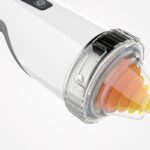A blood centrifuge is a device that separates the components found in the blood such as red red blood cells, plasma and platelets.It also can be used to measure hematocrit values, which are the percentage of red blood cells in whole blood.
Whole blood samples are collected in a blood tube which are loaded into a chamber of the centrifuge and spun at high speeds.
Centrifuges, in general, are classified into several types based on their intended use or rotor design. Among the various types of centrifuges are:
- Benchtop centrifuge
- Microcentrifuge
- Ultracentrifuge
- Large capacity
- Floor-standing
- Refrigerated
- High-speed
- STAT
A blood centrifuge is an extremely useful piece of laboratory equipment. Understanding how the tool works is critical to getting the most out of it.
How does a blood centrifuge work?
Centrifugation is the process by which natural forces are concentrated so that they can act on all particles of varying densities. The separation of components is accelerated by this process.
A blood centrifuge separates platelets, plasma, and red blood cells in a blood sample. During the spin, the blood cells which are denser will sink to the bottom of the tube. The plasma will stay at the top as they are the least dense and the platelets will form a layer between the blood cells and the plasma.
The application of centrifugal force makes this process possible. The centrifugal force acts on the components in suspension when the rotor rotates around a central axis.
Balancing the Centrifuge Machine
It is necessary to balance your samples when using a centrifuge machine. To balance the centrifuge machine, do the following:
- Ensure that all tubes are filled evenly with liquids of similar density.
- Placing tubes opposite each other within the machine to keep gravity in the center
When there are odd number tubes, dummy test tubes with water that matches the mass of the samples should be use as balancer.
Care and Maintenance for the Centrifuge Machine
Make sure the blood centrifuge is properly cared for and maintained so that it produces reliable results, is safe to use, and lasts a long time. Regularly carry out the following checks:
- Inspection: Any problems with the centrifuge machine will be revealed during an inspection. Examine the parts for scratches or chemical stains. All of these are wear indicators that should be addressed as soon as possible.
- Awareness: When using the centrifuge, be on the lookout for warning signs that something isn’t right. Stop the machine immediately if it begins to shake, vibrate, or grind.
- Education: Ensure that everyone who will be using the centrifuge machine understands how to operate it. Teach all laboratory personnel how to balance samples, set speeds, and implement safety precautions.
Cleaning and disinfection are essential for ensuring long-term centrifuge performance. Wipe down the following surfaces with a soft cloth and a neutral cleaning solution (such as an alcohol-based disinfectant).
- Rotors and its chamber
- Accessories
- Interior area
- Touch screens
- Keypads










